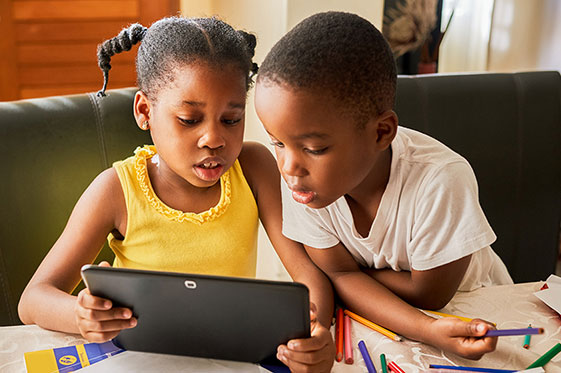We’re watching our students struggle with technology not designed to help them learn.
We teach high school English to new immigrants in the South Bronx. During our online classes, we notice our students multitasking to survive this pandemic. We see them providing child care for younger siblings, and we hear them working jobs to help support their families. We admire our students who are able to join online classes while juggling their other responsibilities, and we ardently wish that their city-issued iPads did not pose yet another barrier to learning.
Teaching writing remotely, we have observed the challenges of learning on the iPads. Try writing more than a tweet on a mobile device and you will quickly understand that it is not a machine designed to facilitate the writing process. These difficulties pose even higher barriers for English language learners in high school.
The education department may have had good intentions of quickly putting more iPads in the hands of lower-income students. However, for older students, the workarounds needed to learn on a mobile device are the technological equivalent of making a house to live in with toothpicks.
Research shows academic literacy in a second language takes at least five years, when students have strong literacy in their first language, and can take at least seven years when this is not the case. Surely this timeframe stretches when class time is reduced due to remote learning.
Even as New York City high schools reopen next week, many students will continue to learn online for the remainder of this school year, and Mayor Bill de Blasio has said there may be a remote option next school year, too. Which is why it’s time for our city’s hardware investments to reflect our value for educational equity. Our students deserve it.
Students like a 15-year-old we’ll call Maria, who wrote this to us earlier in the school year: “I want you to know that I have enough desire to study and I will do so much, I will give the best of me.” She immigrated to New York from the Dominican Republic two years ago and fervently wishes to improve her English. When she unmutes herself to speak in class, her curiosity is audible over the background of her siblings’ remote classes.
At the start of the pandemic, Maria was excited to receive an education department-issued iPad But the built-in Wi-Fi of the mobile device led to frequent drops in online sessions. Maria’s classmates in housing shelters could not even connect to the Wi-Fi, which was stated as a reason to go with iPads over computers.
The hardware itself, with so many security measures in place, is a shadow of what real iPads can do. For example, a student cannot download any apps, even educational ones like Learning Ally, an audio app for students with reading difficulties. Student screen sharing is disabled, too, meaning teachers have a hard time helping from a student perspective.
While ubiquitous Google educational tools such as Google Slides and Docs can be accessed on iPads, the app version is different from computer versions. For learners like Maria, the number of steps and work-arounds means a clear disadvantage.
Here is a snapshot of what it is like to teach and learn for high school English language learners with an education-department iPad:
We are reading a newspaper article together with the aim of practicing close reading by annotating a text. Using a Google Doc, we can see that all students can open and view the document. While screen-sharing, one of us selects an interesting word and demonstrates how to use the comment feature to translate or define the word, including making connections to the students’ first languages. After this modeling, we ask students to scan the text and add their own comments. We notice Maria cannot comment on the document as other students can, and we remember that she is on an iPad.
We create a breakout room for Maria and other peers on iPads so one of us can demonstrate the process on a mobile device. It takes many more steps to leave a comment than it does on a computer. By the time Maria and her peers complete this process, the students on computers have already completed the task and have moved on. Maria, patient and persistent as she is, is at a disadvantage because the tech learning overshadows the language learning. We watch inequality play out daily in our virtual classroom.
Searching for images and typing a composition are similar hurdles. Whereas an iPad may suffice in meeting our teaching needs when we are focused on a purely receptive task, it falls far short for any generative task. Students need both kinds of literacy tasks to make language learning gains. Dumping more money by buying keyboards for students would be a band-aid rather than a true fix.
The next investment in remote learning should give high school teachers, families and students the computer hardware that meets their learning needs. For those opposed to this proposal, we ask that they try to write us back with their views using an iPad. Take Maria’s!
This article was originally posted on NYC gave thousands of students iPads. For English learners, those devices have not been up to the task.






Be First to Comment